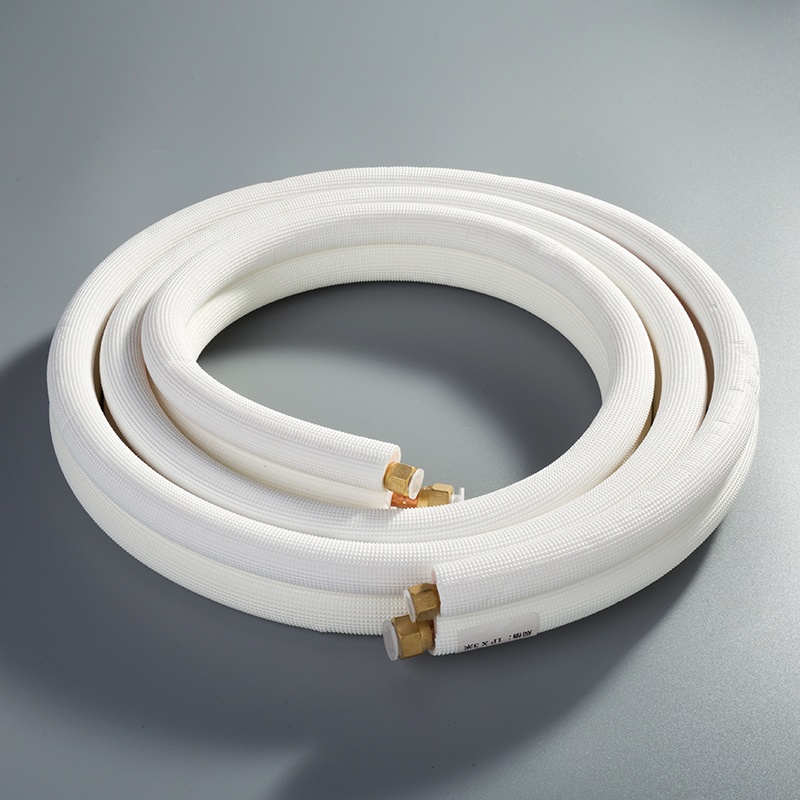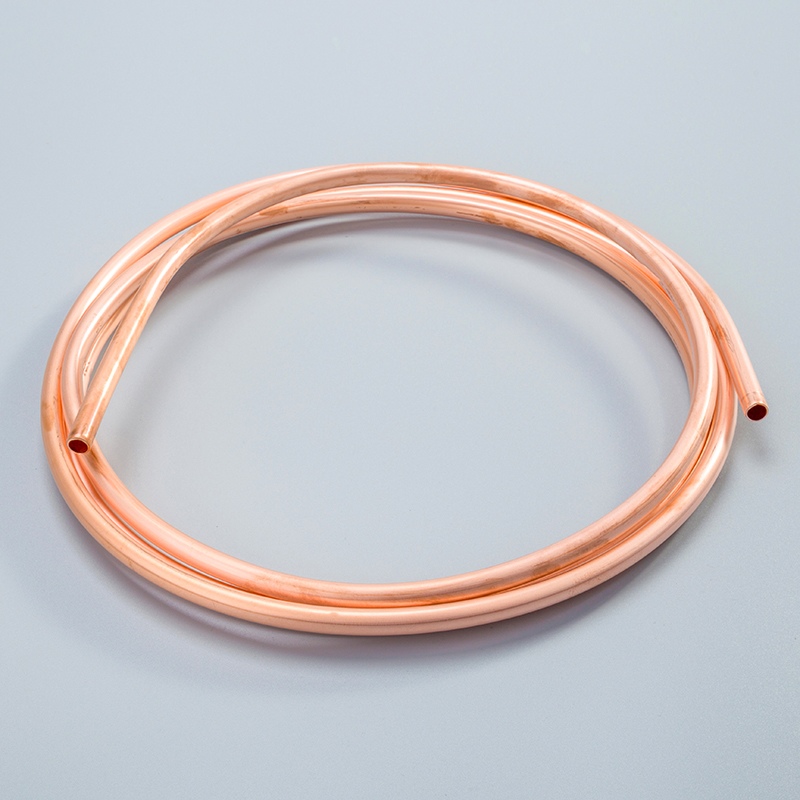Complete Guide to Air Conditioning Maintenance

Regular air conditioning maintenance is a fundamental aspect of any organization's preventive maintenance program. It ensures that the unit operates at optimal performance levels, preventing issues such as reduced efficiency, poor airflow, refrigerant leaks, and system breakdowns. By adhering to a structured maintenance routine, individuals can save on energy costs, repair bills, and premature replacement needs. This comprehensive Guide to Air Conditioning Maintenance aims to provide a detailed overview of essential maintenance tasks for air conditioning systems. Prioritizing maintenance not only enhances efficiency but also extends the lifespan of the unit.
Understanding Your Air Conditioning System
When it comes to air conditioning systems, understanding the different types and key components is essential for effective maintenance.
Types of Air Conditioning Systems
Central Air Conditioning
Central air conditioning systems are a popular choice for cooling large spaces efficiently. They utilize a network of ducts to distribute cool air throughout the building, ensuring consistent temperatures.
Ductless Mini-Split
Ductless mini-split systems offer flexibility in cooling individual rooms or areas without the need for ductwork. They consist of an outdoor compressor unit and one or more indoor air-handling units, providing targeted cooling where needed.
Window Units
Window units are compact air conditioning systems designed to fit into windows. They are suitable for cooling single rooms or small spaces, offering a convenient and cost-effective cooling solution.
Portable Units
Portable units are versatile air conditioners that can be moved from room to room as needed. They typically include wheels for easy mobility and provide temporary cooling solutions for various settings.
Key Components of an Air Conditioning System
Compressor
The compressor plays a crucial role in the air conditioning system by compressing refrigerant gas to increase its temperature. This high-pressure gas then moves to the condenser for heat dissipation.
Condenser
The condenser is responsible for releasing heat absorbed from inside the building to the outside environment. It facilitates the liquefaction of high-pressure gas into liquid refrigerant, crucial for efficient cooling.
Evaporator
The evaporator coil absorbs heat from indoor air, causing the refrigerant within it to evaporate and cool down. This cooled air is then circulated back into the space, maintaining comfortable temperatures.
Refrigerant
Refrigerant is a vital component that cycles through the air conditioning system, absorbing and releasing heat at different stages. Proper refrigerant levels and quality are essential for optimal system performance.
Routine Maintenance Tasks

Deactivating the Power Supply
To begin maintenance tasks, prioritizing safety is paramount. Ensuring the power supply is deactivated before any work commences prevents electrical hazards and potential accidents.
Importance of Safety
Safety should always come first in any maintenance procedure to avoid risks and injuries.
Deactivating the power supply eliminates the danger of electric shock or damage during maintenance tasks.
Steps to Deactivate
Locate the main electrical panel in your home or building.
Identify the circuit breaker labeled for the air conditioning unit.
Switch off the corresponding circuit to cut off power supply to the AC system.
Checking and Replacing Air Filters
Maintaining clean air filters is crucial for efficient air conditioning performance. Regular checks and replacements ensure optimal airflow and prevent dust buildup that can strain the system.
Importance of Clean Filters
Clean filters promote better air quality by trapping dust, allergens, and pollutants.
Regular replacement prevents clogging, which can lead to reduced efficiency and increased energy consumption.
How Often to Replace Filters
Check your air filters every 30 days for signs of dirt or blockage.
Replace disposable filters every 90 days, or sooner in dusty environments, to maintain peak performance.
Steps to Replace Filters
Turn off the air conditioning system before accessing the filter compartment.
Remove the existing filter carefully, noting its size and type for replacement.
Install a new filter following the manufacturer's instructions, ensuring proper alignment.
Cleaning the Coils
Cleaning AC coils is essential for efficient heat exchange within the system. Dirt accumulation on coils can hinder cooling capacity and strain components over time.
Evaporator Coils
The evaporator coils absorb heat from indoor air, making them prone to dust buildup.
Regular cleaning ensures optimal heat transfer efficiency and prevents freezing issues.
Condenser Coils
The condenser coils release heat absorbed from indoors into the external environment.
Clearing debris from these coils maintains proper airflow and enhances overall cooling performance.
Cleaning Methods
Use a soft brush or vacuum attachment to gently remove surface debris from coils.
Apply a mild detergent solution if stubborn dirt persists, rinsing thoroughly afterward.
Avoid using sharp objects that could damage coil fins during cleaning processes.
Cleaning and Clearing Debris
When it comes to cleaning and clearing debris around the condenser unit, meticulous attention is crucial for optimal air conditioning system performance. Neglecting this maintenance task can lead to blockages, reduced airflow, and potential overheating issues that compromise the efficiency of the unit.
Around the Condenser Unit
Inspect Surroundings: Regularly survey the area surrounding the condenser unit to identify any debris accumulation such as leaves, twigs, or dirt.
Clear Obstructions: Remove any debris obstructing the airflow around the condenser unit using a soft brush or vacuum cleaner.
Trim Vegetation: Ensure nearby plants or bushes are trimmed back to maintain a clear space around the unit for proper ventilation.
Tools and Techniques
Soft Brush: Utilize a soft-bristled brush to gently sweep away loose debris from the exterior of the condenser unit without causing damage.
Vacuum Cleaner: Employ a vacuum cleaner with a brush attachment to effectively remove finer particles and dust from hard-to-reach areas.
Protective Gear: Wear gloves and protective eyewear when handling debris removal to safeguard against potential hazards.
Regular Maintenance Benefits: By routinely cleaning and clearing debris around the condenser unit, individuals can prevent airflow restrictions, reduce strain on components, and ensure efficient cooling operation throughout different seasons.
Checking Refrigerant Lines
Checking refrigerant lines is an essential step in maintaining an air conditioning system's cooling capacity and energy efficiency. Identifying leaks promptly and inspecting these lines regularly can prevent refrigerant loss, which can lead to decreased cooling performance and potential system malfunctions.
Identifying Leaks
Visual Inspection: Examine refrigerant lines for any visible signs of oil stains, corrosion, or frost accumulation that may indicate leaks.
Pressure Testing: Conduct pressure tests using specialized equipment to detect leaks in the refrigerant lines accurately.
Steps to Inspect
Turn Off Power: Deactivate the power supply to the air conditioning system before proceeding with any inspection of refrigerant lines for safety reasons.
Visual Examination: Carefully examine all exposed refrigerant lines for wear, damage, or signs of leakage that require immediate attention.
Professional Assistance: If leaks are detected or suspected during inspection, seek professional HVAC assistance promptly to address and repair any issues effectively.
Regular inspections of refrigerant lines contribute significantly to maintaining optimal cooling performance while preventing costly repairs associated with refrigerant leaks.
Inspecting the Thermostat
Ensuring that your thermostat is functioning correctly is vital for maintaining comfortable indoor temperatures efficiently while optimizing energy consumption based on specific cooling needs.
Ensuring Proper Function
Calibration Check: Periodically verify that your thermostat is calibrated accurately by comparing it with an external thermometer reading in close proximity.
Battery Replacement: Replace thermostat batteries annually or as needed to prevent unexpected shutdowns due to low battery power.
Settings Adjustment: Adjust temperature settings seasonally to match comfort preferences while maximizing energy savings during peak usage times.
Upgrading to a Programmable Thermostat
Energy Efficiency: Upgrade your existing thermostat to a programmable model for enhanced energy efficiency through automated temperature adjustments based on preset schedules.
Convenience Features: Enjoy added convenience with programmable thermostats offering features like remote access control via smart devices for personalized comfort management.
3.Cost Savings: Reduce energy costs by programming setback periods when occupants are away or asleep without compromising comfort levels within living spaces.
Testing the Unit
Post-Maintenance Testing
Inspect System: After completing the maintenance tasks, conduct a thorough inspection of the air conditioning unit to ensure all components are intact and functioning correctly.
Run Diagnostic Tests: Utilize diagnostic tools to assess the system's performance, checking for any irregularities in temperature control, airflow, or unusual sounds that may indicate underlying issues.
Monitor Efficiency: Measure the unit's energy efficiency post-maintenance to verify that it is operating optimally and not consuming excess power due to unresolved problems.
Ensuring Proper Functionality
Verify Cooling Capacity: Test the air conditioning system's cooling capacity by monitoring how quickly it reaches and maintains desired indoor temperatures after maintenance procedures.
Assess Airflow: Confirm that there are no obstructions affecting airflow within the system, ensuring consistent distribution of cool air throughout the space.
Check Thermostat Response: Evaluate the responsiveness of the thermostat settings post-maintenance to guarantee accurate temperature adjustments based on user preferences.
Ensure System Stability: Run the air conditioning unit for an extended period after maintenance to confirm its stability and reliability under normal operating conditions.
Seasonal Maintenance Tips
Preparing for Summer
Pre-Season Inspection
Inspecting the System: Before the summer heat sets in, conducting a thorough inspection of the air conditioning system is crucial for identifying any potential issues or wear that may impact its performance during peak cooling periods.
Checking Electrical Components: Ensure all electrical connections are secure and free from damage to prevent malfunctions or safety hazards when the system is in operation.
Testing Thermostat Accuracy: Verify the accuracy of the thermostat settings to guarantee precise temperature control and efficient cooling operation throughout the summer months.
Cleaning and Clearing Debris
Clearing Outdoor Unit: Remove any debris, such as leaves, dirt, or branches, from around the outdoor condenser unit to maintain proper airflow and prevent blockages that can hinder cooling efficiency.
Trimming Vegetation: Trim back overgrown vegetation near the condenser unit to create ample space for ventilation and unrestricted airflow, ensuring optimal performance.
Inspecting Air Vents: Check indoor air vents for obstructions or dust buildup that may impede airflow, affecting overall cooling capacity and indoor comfort levels.
Preparing for Winter
Shutting Down the System
Power Off Procedure: Before winter arrives, follow a systematic process to power off the air conditioning system safely to prevent unnecessary energy consumption and protect components from cold weather damage.
Adjusting Settings: Set the thermostat to an appropriate temperature or switch it off entirely if not needed during winter months to avoid running the system unnecessarily.
Covering Outdoor Components: Consider covering outdoor units with protective covers designed for air conditioners to shield them from harsh winter elements like snow, ice, and debris.
Covering the Unit
Insulating Pipes: Wrap exposed refrigerant lines with insulation material to prevent freezing or damage due to low temperatures during winter, safeguarding against potential leaks or ruptures.
Securing Covers: Ensure that any covers used on outdoor units are securely fastened but allow for proper ventilation to avoid moisture buildup inside components that could lead to corrosion.
Regular Maintenance Reminder: Even during winter months when AC usage is minimal, periodic checks on covered units are essential to ensure they remain in good condition for upcoming seasons.
Troubleshooting Common Issues

Air Conditioner Not Cooling
Possible Causes
Low Refrigerant Levels: Inadequate refrigerant can hinder the cooling process, leading to insufficient temperature regulation within the air conditioning system.
Clogged Air Filters: Dirty filters restrict airflow, causing the system to work harder and reducing its cooling capacity.
Faulty Compressor: A malfunctioning compressor may fail to circulate refrigerant effectively, resulting in poor cooling performance.
Solutions
Recharge Refrigerant: Consult a professional technician to assess and replenish refrigerant levels to restore optimal cooling efficiency.
Replace Air Filters: Regularly clean or replace air filters every 90 days to maintain unrestricted airflow and enhance cooling effectiveness.
Repair or Replace Compressor: Address compressor issues promptly by repairing or replacing the component as needed to ensure proper refrigerant circulation.
Unusual Noises
Identifying the Source
Rattling Sounds: Loose components or debris within the unit can cause rattling noises during operation, indicating potential mechanical issues.
Squealing or Screeching: High-pitched sounds often stem from belt problems or motor issues, requiring immediate attention to prevent further damage.
Clicking Sounds: Intermittent clicking noises could signal electrical faults or relay malfunctions affecting system performance.
Fixing the Problem
Tighten Loose Components: Secure any loose parts within the air conditioning unit to eliminate rattling noises and prevent component damage.
Inspect Belts and Motors: Check belts for wear and tear, replacing them if necessary, and lubricate motors to reduce friction-induced squealing sounds.
Professional Evaluation: Seek expert assistance for diagnosing clicking noises, as they may indicate complex electrical issues that require specialized repair.
Water Leaks
Common Reasons
Clogged Drain Line: Blockages in the drain line can cause water backup within the system, leading to leaks and potential water damage.
Frozen Evaporator Coils: Frozen coils result in excess condensation that overflows from the drip pan, causing water leakage around the unit.
Refrigerant Leaks: Refrigerant leaks not only impact cooling efficiency but also contribute to excess moisture accumulation that manifests as water leaks.
How to Address
Clear Drain Line Blockages: Use a mixture of vinegar and water or a plumber's snake to clear clogs in the drain line and restore proper drainage function.
Thaw Frozen Coils: Turn off the air conditioner and allow frozen coils to thaw naturally before restarting the system once they have completely defrosted.
Professional Leak Repair: Contact a certified HVAC technician if you suspect refrigerant leaks, as they require specialized equipment for detection and repair.
When to Call a Professional
Recognizing Complex Issues
Electrical Problems
Inspecting the electrical components of an air conditioning system is crucial to identify potential issues that may require professional intervention.
Loose connections, faulty wiring, or damaged electrical parts can disrupt the system's operation and pose safety risks.
Any signs of electrical malfunctions such as flickering lights, tripped circuits, or burning odors should prompt immediate attention from a qualified technician.
Major Component Failures
Detecting major component failures in an air conditioning unit demands a keen eye for detail and understanding of system mechanics.
Components like compressors, condensers, or evaporator coils failing to function can lead to complete system breakdowns if left unaddressed.
Unusual noises, inconsistent cooling performance, or visible leaks are indicators of potential major component failures requiring expert diagnosis and repair.
Finding a Reliable HVAC Technician
What to Look For
When seeking an HVAC technician for air conditioning maintenance, look for certifications and licenses that validate their expertise in the field.
Experience and reputation play significant roles in determining the reliability and quality of service provided by HVAC professionals.
A trustworthy technician should offer transparent pricing, detailed explanations of services rendered, and clear communication throughout the maintenance process.
Questions to Ask
Certifications: Inquire about the technician's certifications and training to ensure they are qualified to handle air conditioning systems effectively.
Service Guarantees: Ask about any service guarantees or warranties offered on maintenance work performed to safeguard against future issues.
Maintenance Recommendations: Seek advice on additional maintenance tasks or upgrades that could enhance your air conditioning system's efficiency and longevity.
Recap of Key Maintenance Tasks:
Prioritize safety by deactivating the power supply before maintenance.
Regularly check and replace air filters every 90 days for optimal performance.
Clean coils to ensure efficient heat exchange within the system.
Clear debris around the condenser unit to prevent blockages.
Inspect refrigerant lines for leaks to maintain cooling capacity.
Benefits of Regular Maintenance:
Enhances efficiency and extends the lifespan of the unit.
Prevents issues like reduced airflow, refrigerant leaks, and breakdowns.
Saves on energy costs, repair bills, and premature replacements.
Encouragement to Follow the Guide:
Optimal performance and longevity are achievable through proactive care.
Following this comprehensive guide ensures a well-maintained air conditioning system.
Final Safety Reminders:
Always prioritize safety during maintenance tasks.
Regular maintenance is key to preventing costly repairs and ensuring a comfortable indoor environment.
See Also
Efficient Maintenance Guide for Copper Pipes
DIY Fix: Repairing Holes in AC Copper Tubes
Pro Tips for Installing AC Copper Tubes Easily


